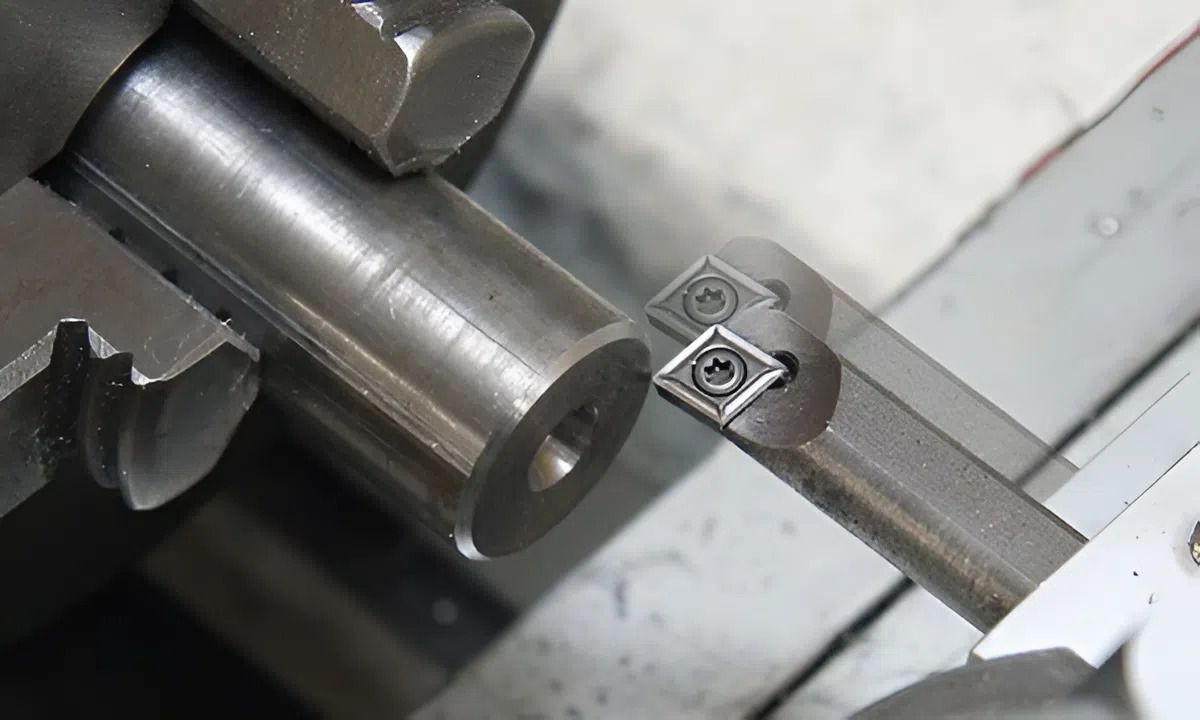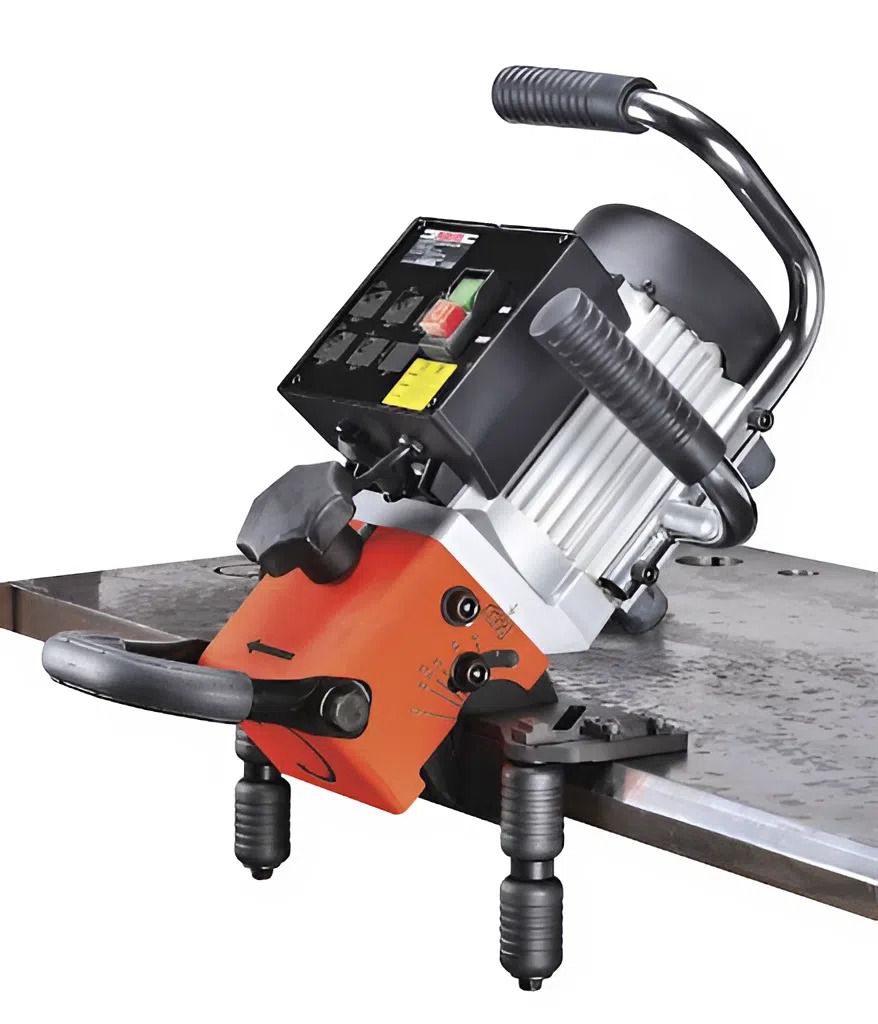Chamfering Machine
What is Chamfering? Applications and Methods of Chamfering in Machining
In mechanical processing, components often have sharp edges or burrs remaining along the edges after cutting. If left untreated, these edges can easily cause damage during assembly or make handling difficult. Therefore, workers usually perform chamfering to remove the sharp edges, resulting in a cleaner and easier-to-handle surface.

Chamfering is the process of treating a component's edge to form an inclined angle or a rounded shape as required. The main goal is to create an appropriate profile for assembly, welding, or surface finishing.
In mechanical drawings, the chamfer is denoted by the letter C or R. The letter C indicates a straight chamfer cut at a specific angle, while R represents a rounded edge with a specific radius (a fillet).
Common Types of Chamfers
Straight Edge Chamfer
This is the most common type, appearing on almost all mechanical components. The edge is cut to form a small flat surface, usually at a 45-degree angle. This type of chamfer helps the component easily slide into position during assembly and simultaneously removes residual burrs after machining.
Rounded Edge (Fillet)
Instead of a flat cut, the edge is rounded or curved to create a smoother transition between the two surfaces. This rounded shape is often used for components that require resistance to repeated stress or need to limit crack formation at the corner.
Micro Chamfer
This is a very small chamfer, typically from 0.2 to 0.3 mm. Its main purpose is primarily to clean the edge and remove burrs without changing the component's overall dimensions.
The Role of the Chamfering Process
Chamfering helps components be neater and safer to handle, especially during assembly or dimensional inspection. When two components are joined, the chamfered edge helps them slide into position more easily, preventing surface scratching or positional misalignment.
For shaft-type components, chamfering the shaft end helps it enter the locating hole more smoothly. For metal sheets, a uniformly chamfered edge will result in a better-fused weld and prevent issues like lack of penetration or porosity during welding.
Furthermore, a chamfered component is also more convenient for plating, painting, or surface treatment, as the coating adheres evenly around the edge, avoiding the localized build-up that occurs when sharp corners are left.
Methods for Chamfering in Machining
1. Milling Chamfering
This is the most common method in machine shops. Specialized milling cutters are designed to create the desired cutting angle. Depending on the requirement, the operator can adjust the depth or angle of the chamfer directly on the machine. This method is suitable for components with complex shapes or those requiring a chamfer with stable dimensions.
2. Turning Chamfering
Applied to round or shaft-type components. The cutting tool is positioned at an angle relative to the workpiece's rotation axis to cut away the outer edge. Turning chamfering results in a neat, precise edge, often used as a preparatory step before mounting bearings, bushings, or gears.
3. Handheld Chamfering Machine
When quick processing of large steel plates or non-fixed components is needed, a handheld Chamfering Machine is used. This tool allows for flexible angle adjustment, suitable for small workshops or on-site work. Some popular current models like Jiun Ting, Unifast, or AGP can chamfer thick workpieces and create uniform angles along the entire edge length.

Applications of Industrial Chamfering Machines
In current manufacturing plants, the chamfering process has been mechanized thanks to specialized chamfering machines. These devices can quickly process large batches of components, yielding uniform and stable edge profiles.
Chamfering machines are applied in the machining of steel plates, pipes, structural components, and mechanical accessories. In addition to shortening working time, the machine helps the worker achieve the precise cutting angle without requiring frequent manual adjustments.
The information above provides basic knowledge about the chamfering process, common machining methods, and applications in mechanical manufacturing. Fully understanding the characteristics of each method will help in selecting the appropriate chamfering equipment for job requirements, thereby enhancing machining efficiency and product quality.
-
-
-
-
-
-
-
-
-
-
-
-
-
-
-
-
-
-
-
-
-
-
-
-